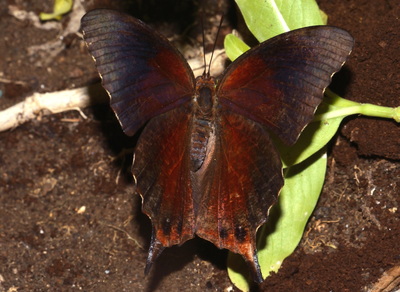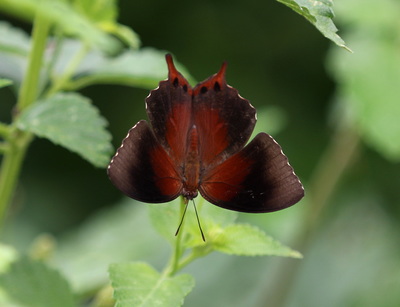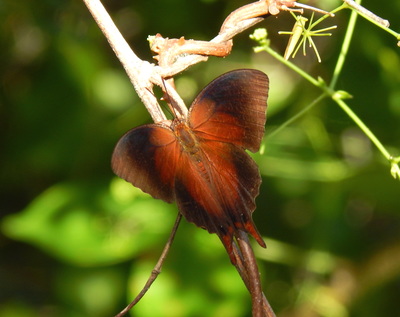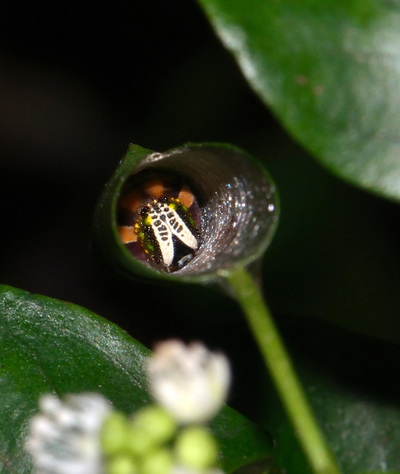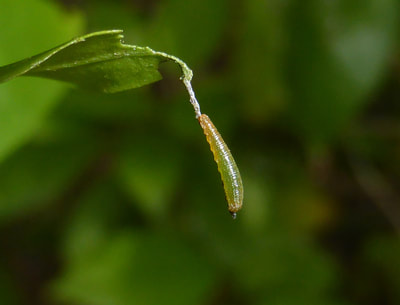Nymphalidae : Charaxinae
Cymatogramma echemus (Doubleday, [1849])
Chestnut Leafwing
Cymatogramma echemus (Doubleday, [1849])
Chestnut Leafwing
Previously known as: Memphis echemus, Memphis verticordia.
Description and Similar Species: Wingspan 54-65mm. A strikingly variable species with differing 'dry' and 'wet' season forms and females being brighter than males. Males are much plainer on the underside than females.
Range: Endemic to the West Indies found only on Cuba and with two separate subspecies found on the Bahamas and on the Cayman Islands.
Status: Common in the lowlands near the coast and we have also found it several miles inland at 200m+ in height.
Nectar Plants: It is said to feed only on sap runs and rotten fruit. The available literature states that it has not been observed taking nectar though it clearly does as can be seen from the photos below. We have also watched it nectaring on Lantana and also feeding on Lantana berries.
Larval Foodplants: Gundlach (1881) noted the foodplant as Croton lucidus.
Description and Similar Species: Wingspan 54-65mm. A strikingly variable species with differing 'dry' and 'wet' season forms and females being brighter than males. Males are much plainer on the underside than females.
Range: Endemic to the West Indies found only on Cuba and with two separate subspecies found on the Bahamas and on the Cayman Islands.
Status: Common in the lowlands near the coast and we have also found it several miles inland at 200m+ in height.
Nectar Plants: It is said to feed only on sap runs and rotten fruit. The available literature states that it has not been observed taking nectar though it clearly does as can be seen from the photos below. We have also watched it nectaring on Lantana and also feeding on Lantana berries.
Larval Foodplants: Gundlach (1881) noted the foodplant as Croton lucidus.
Larva
Pupa
Foodplants and Habitat







